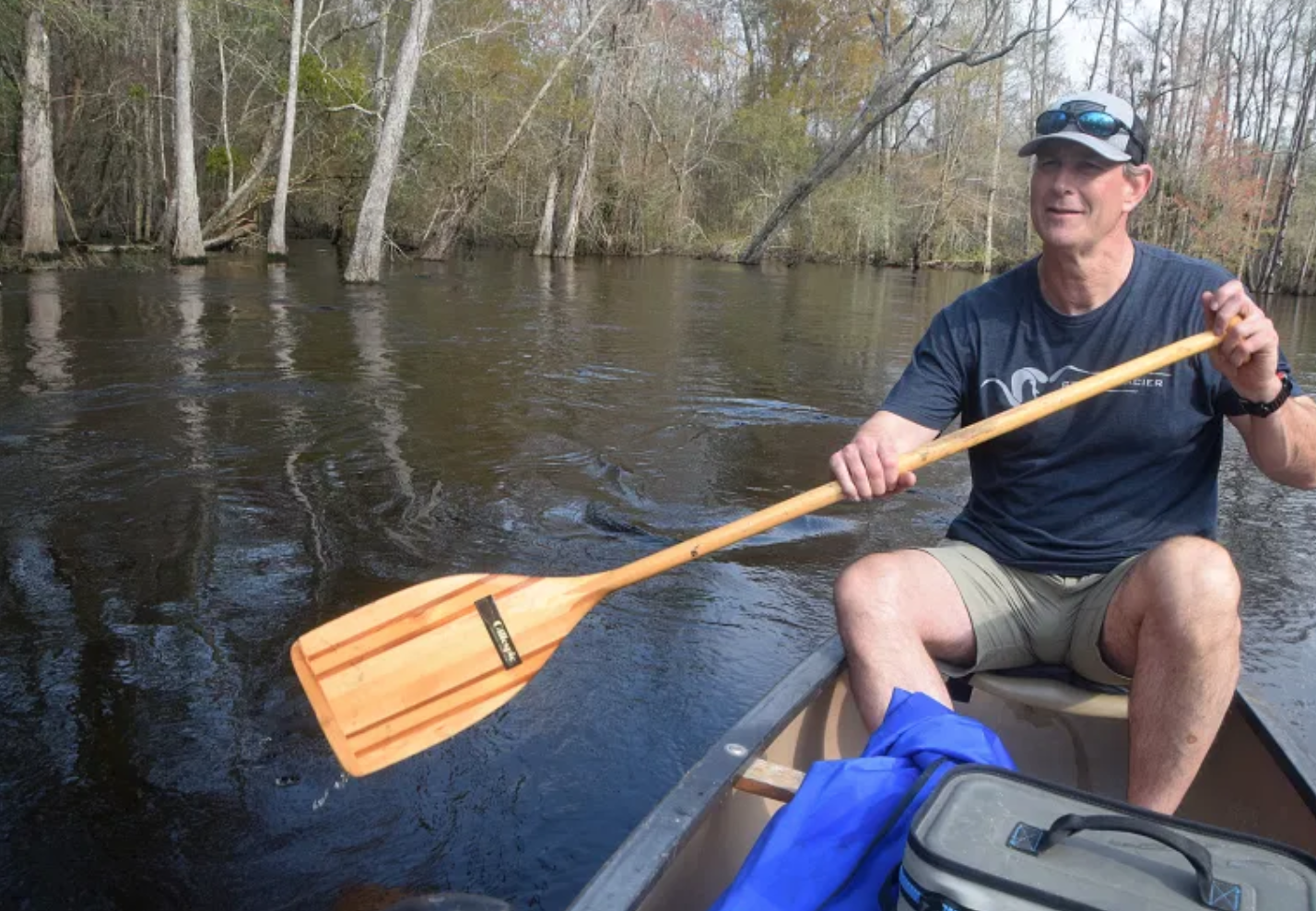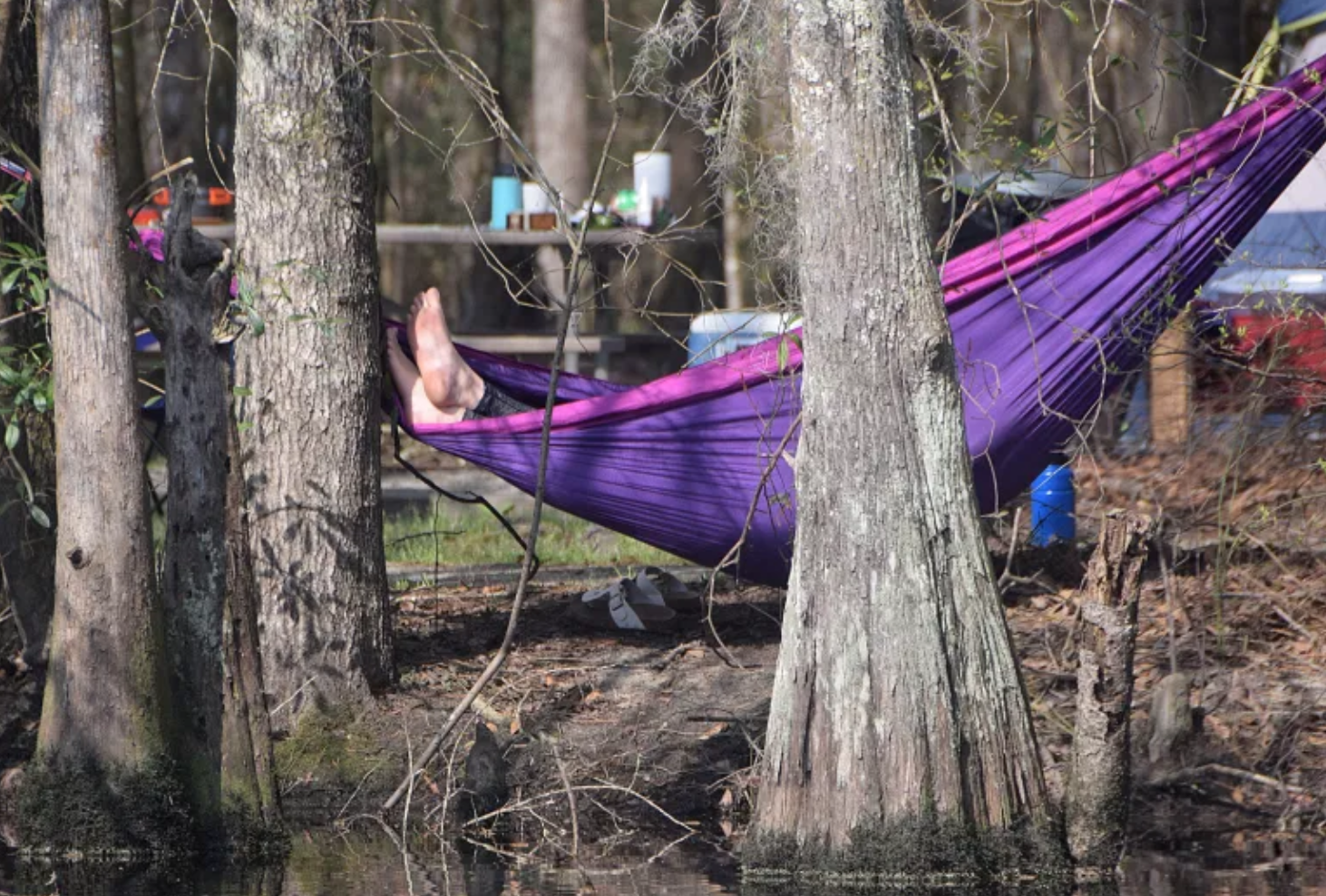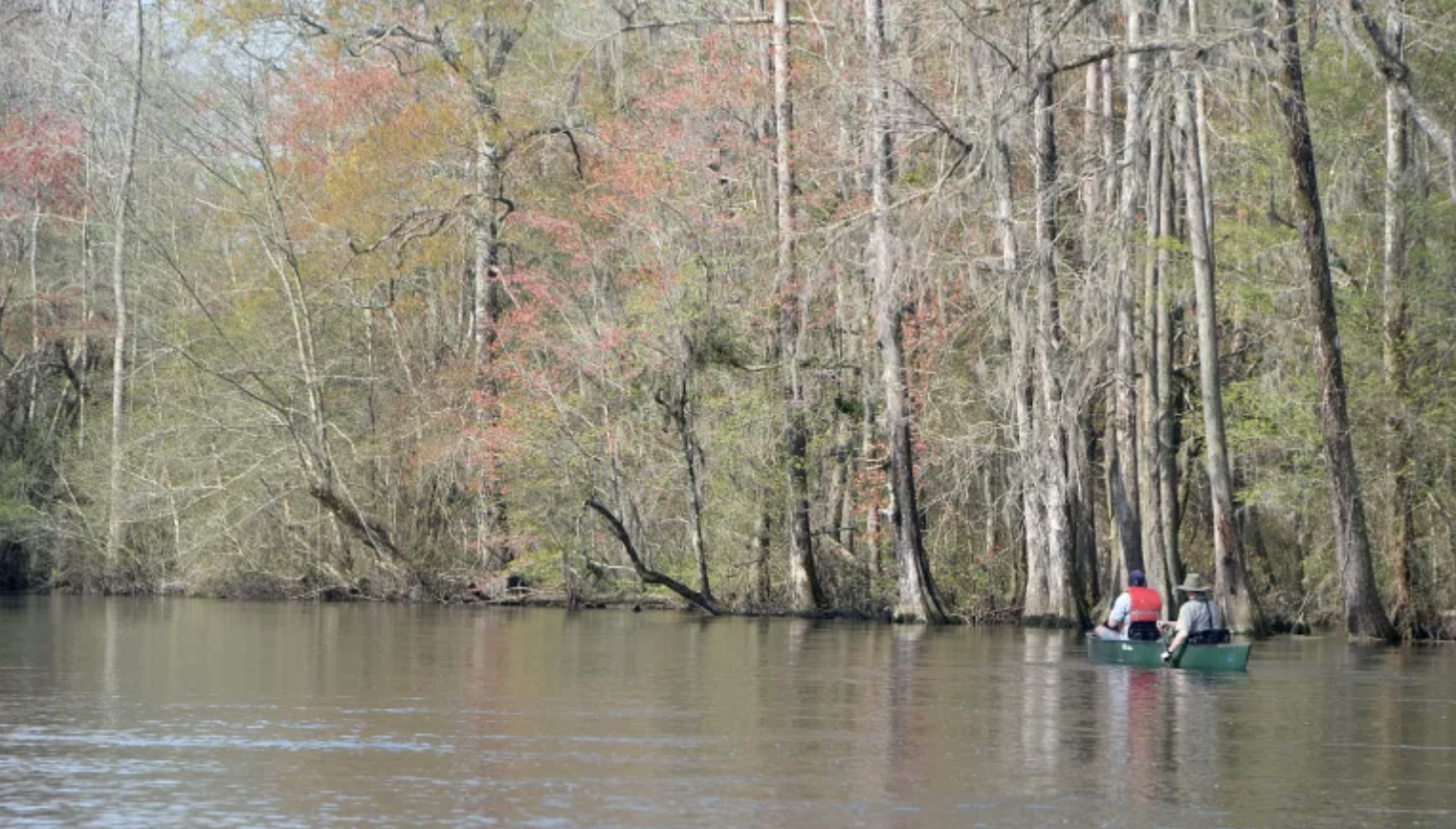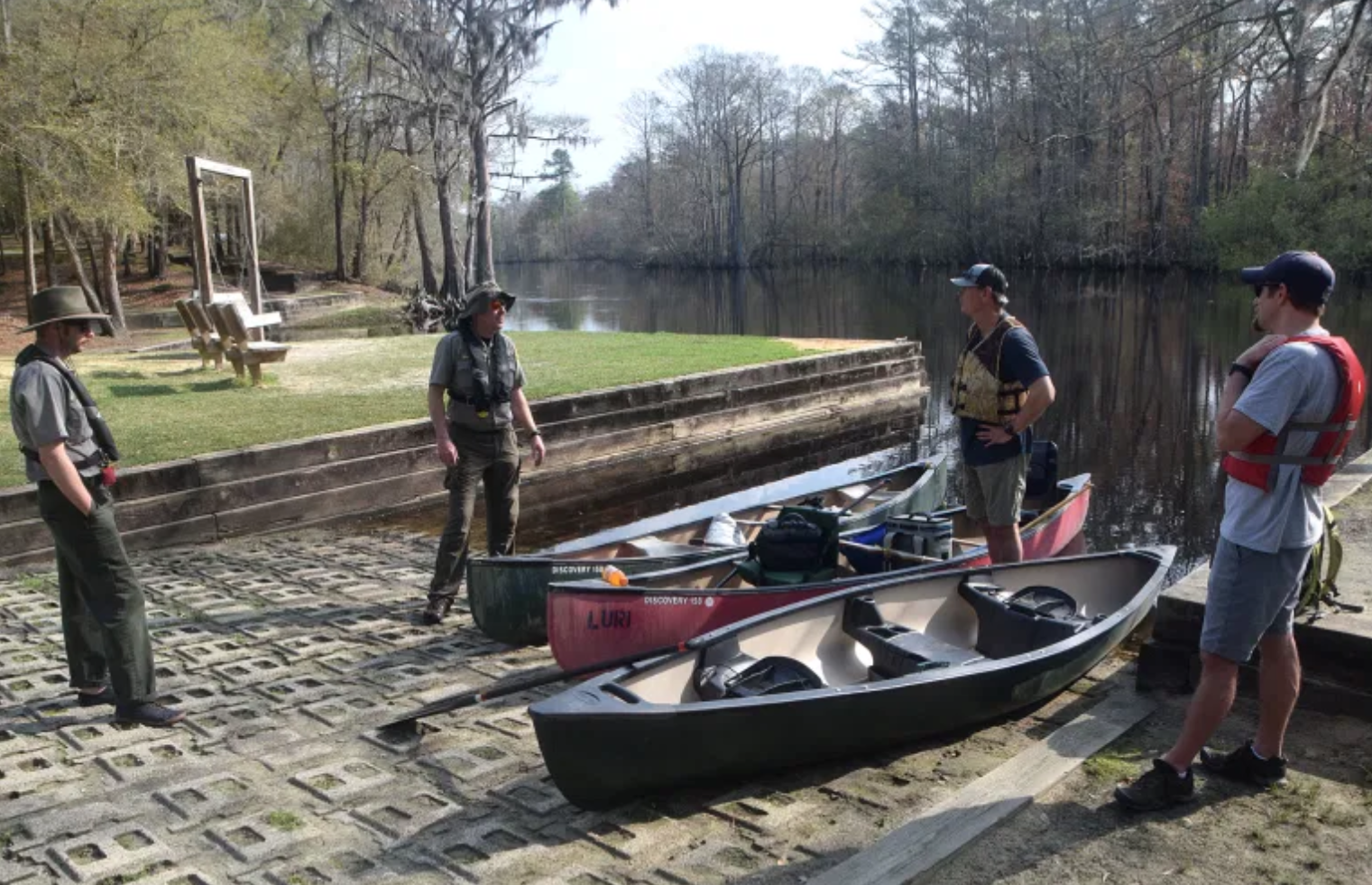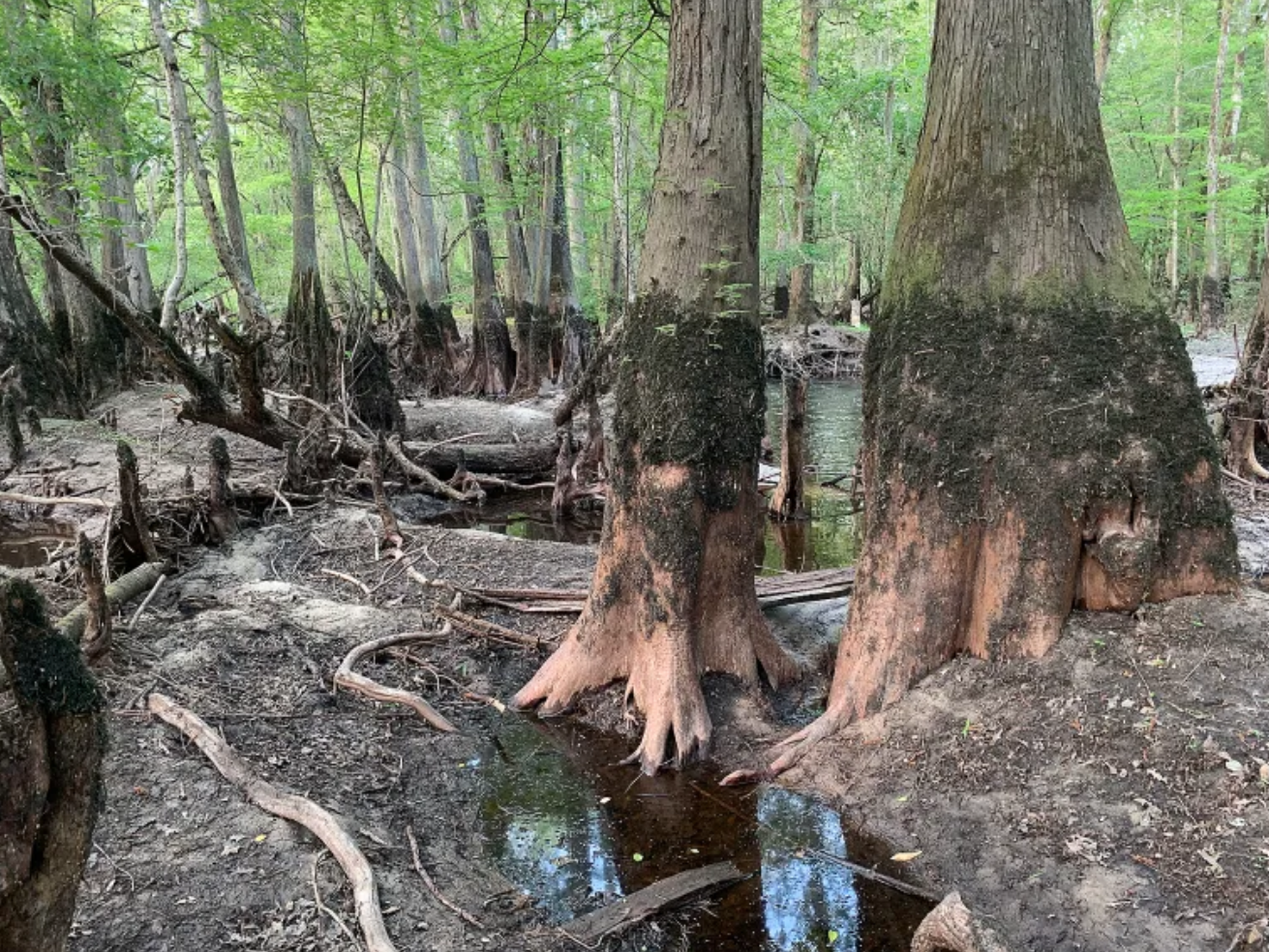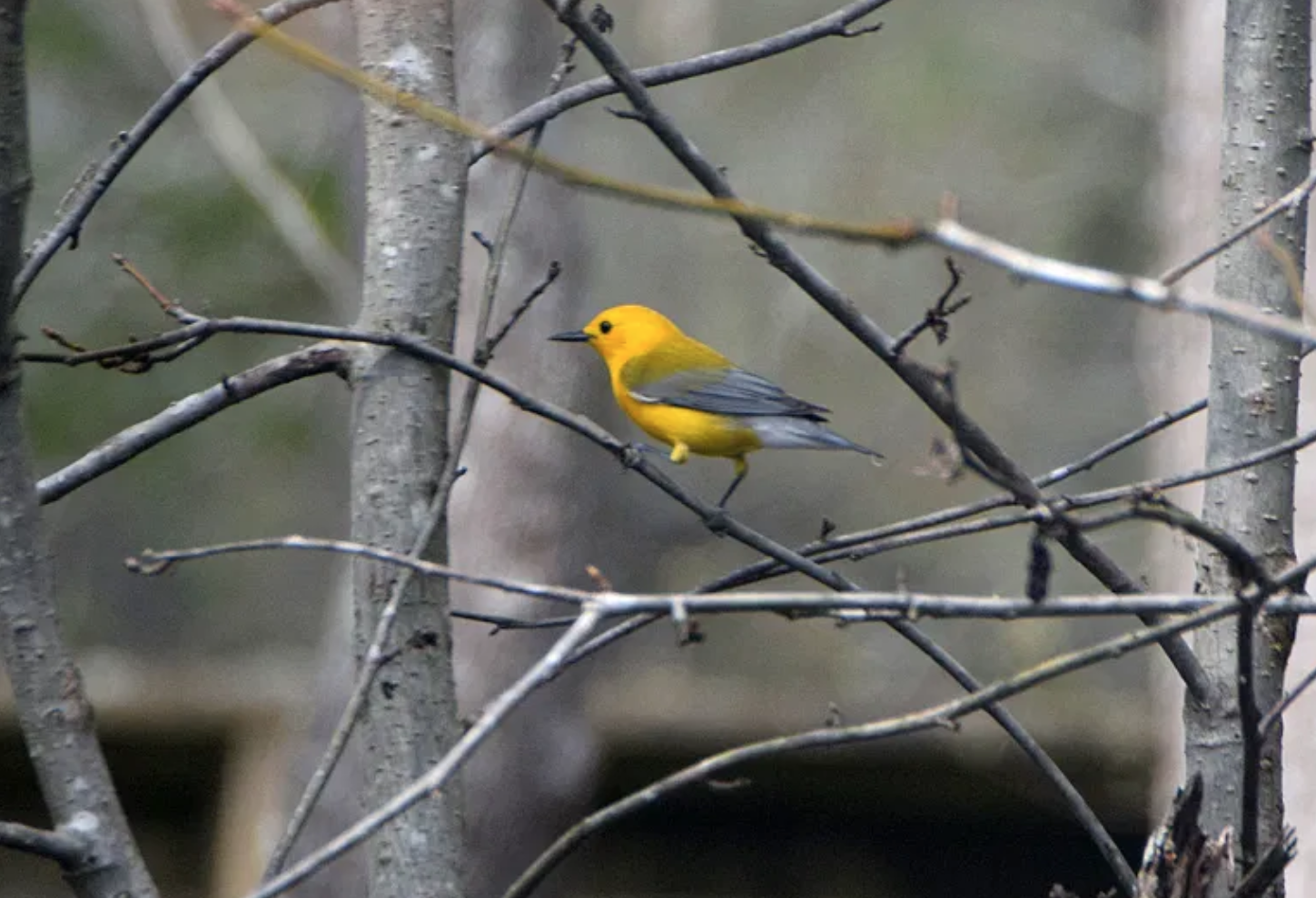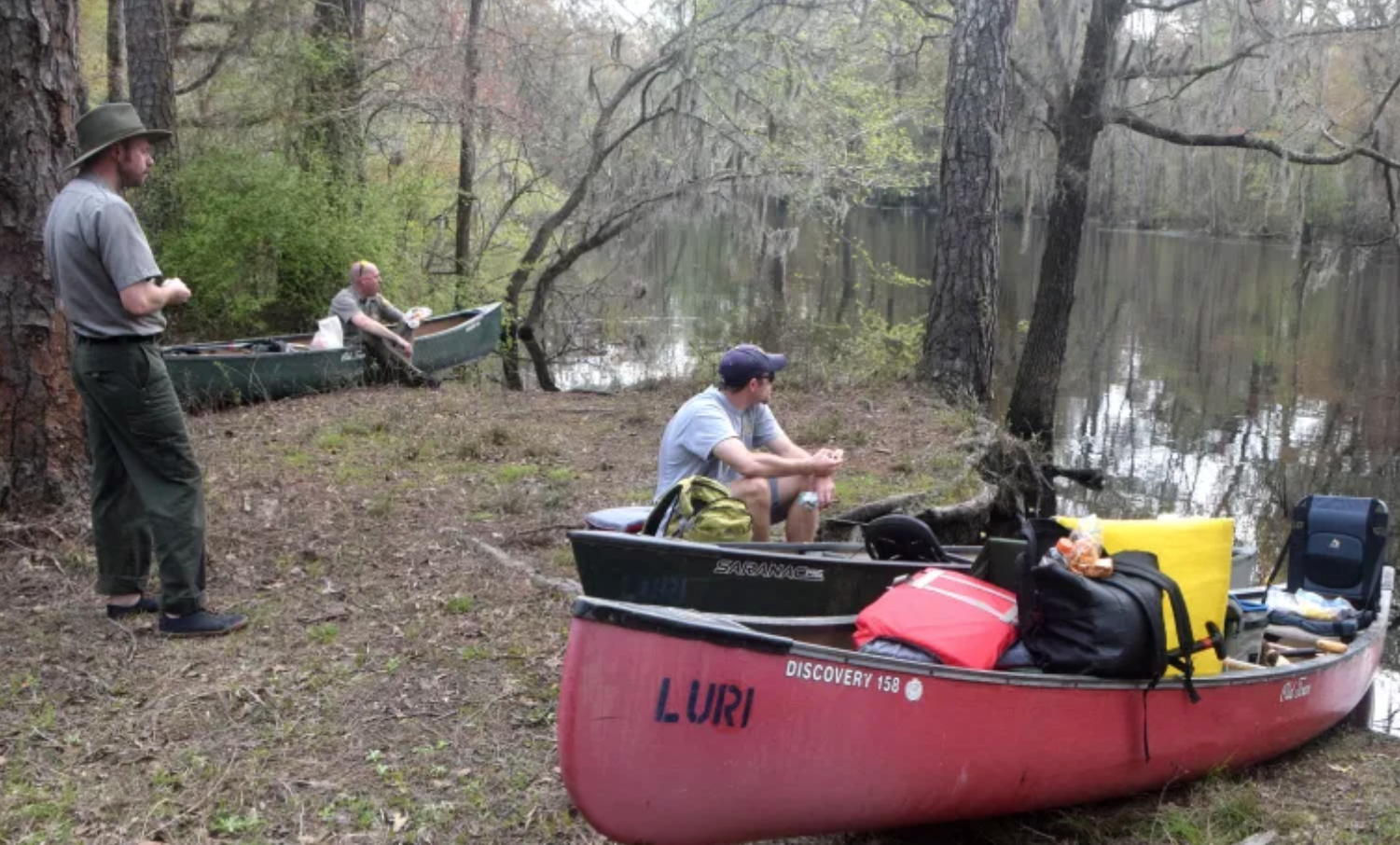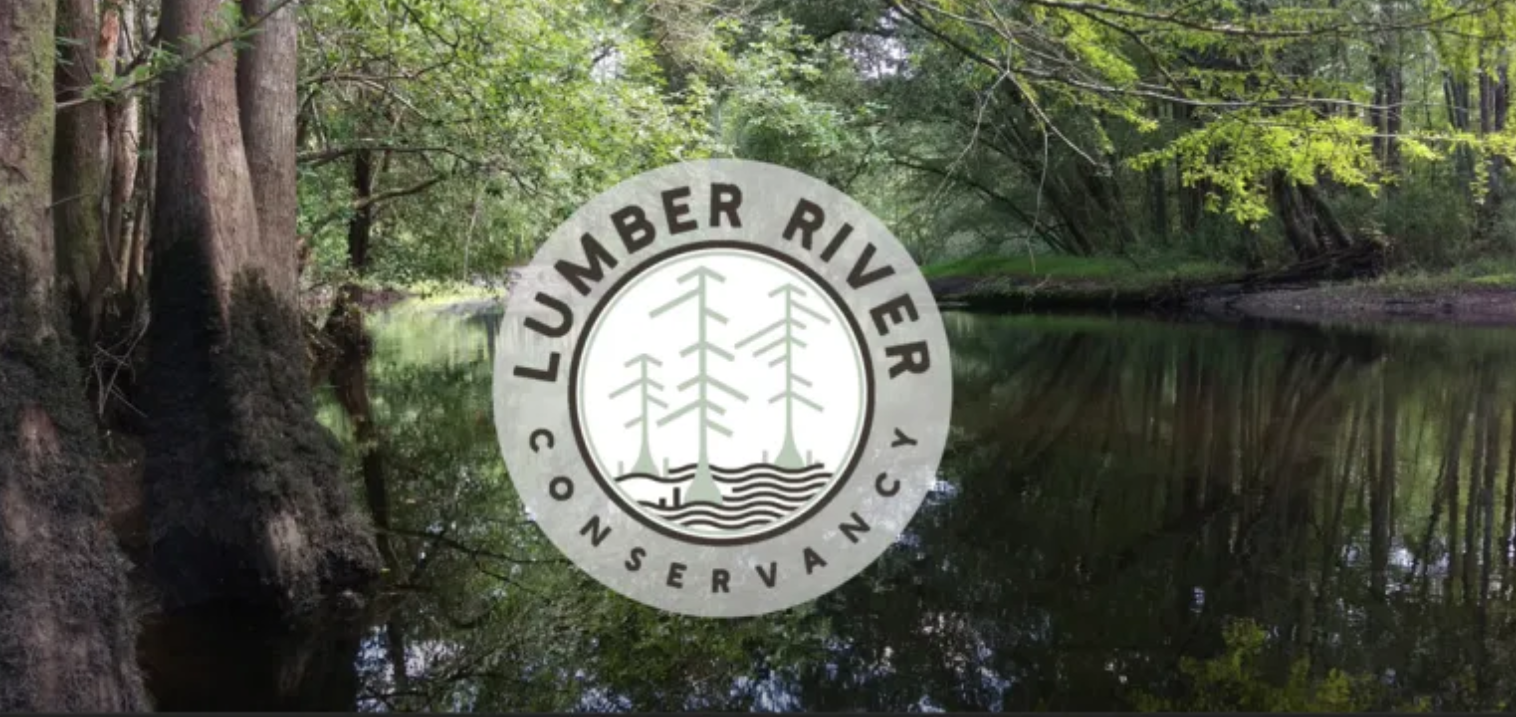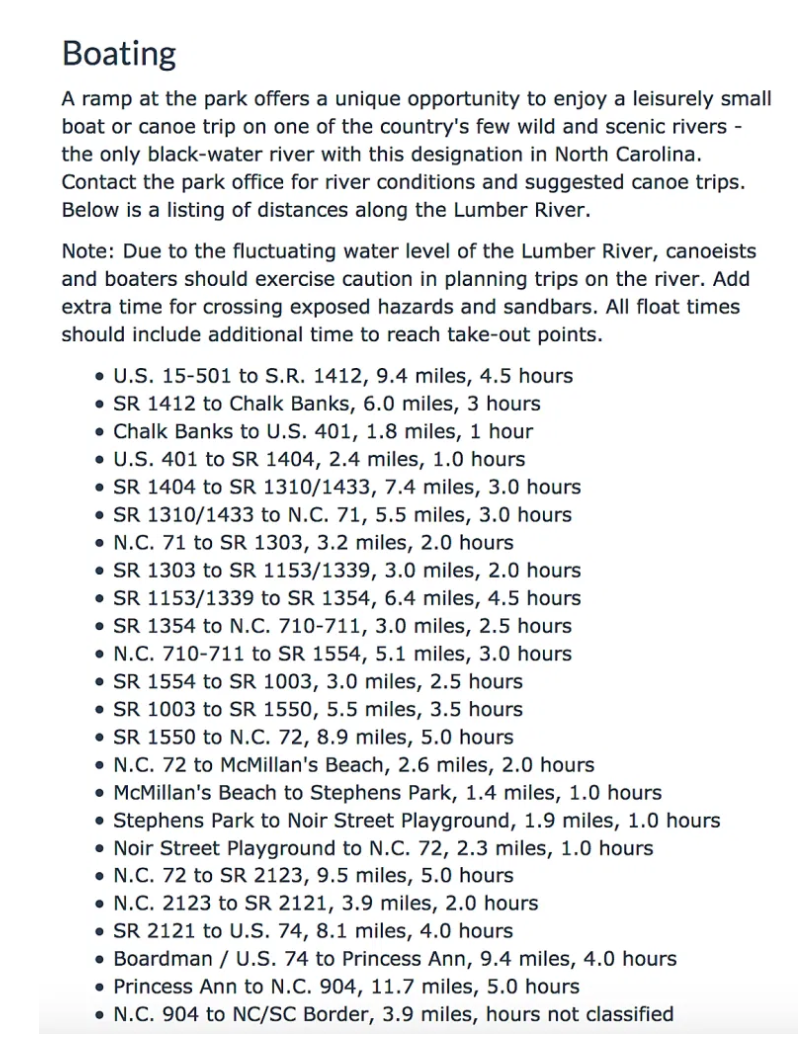Editor’s note. This is the third of a three-part series on the Lumber River and its potential as an eco-tourism destination.
Dickson McLean is a long-time paddler on the river and a member of the Lumber River Conservancy board. Photos by Les High
Even though the Lumber River is one of only five rivers in North Carolina designated as “Wild and Scenic” by Congress, the meandering waterway sees limited use except for locals who were raised on it.
The Lumber River runs 115 miles from its headwaters at Drowning Creek near Southern Pines to the South Carolina line, where it merges with the Little Pee Dee River near Nichols, S.C. Eighty-one miles of the river are designated as Wild and Scenic. Like many coastal rivers, little of it runs in a straight line; instead, the river is one switchback after another.
It’s a tannin-stained river with a rich, dark-brown tone; yet, the color of the water belies how clean it is thanks in part to its mostly sandy bottom and limited development along its corridor.
An easy morning at the Lumber River State Park campsite at Orrum.
Almost 18,000 acres that adjoin the river are owned or preserved by the State of North Carolina and the Lumber River Conservancy, a non-profit group founded by the late Lumberton businessman Carr Gibson and the late attorney Dickson McLean III. About 4,000 acres are attributed to the volunteer group’s efforts. The Lumber River Conservancy, founded in 1991, is one of the oldest in North Carolina.
The Lumber River State Park adjoins the river in several sections. There is a campground, a boat launch and a picnic area at Chalk Banks near Wagram in Scotland County. The river then runs through the ancient tribal grounds of the Lumbee Tribe near Pembroke, under I-95 at Lumberton, on to Boardman at U.S. 74, then forms the border between Columbus and Robeson counties until it reaches the state line. The Lumber River State Park’s headquarters are at Princess Ann Landing near Orrum in Robeson County, not far from U.S. 74.
An easy float down river
Princess Ann Landing is where I met Dickson McLean IV, a Wilmington attorney who plays a leading role in the Lumber River Conservancy; Joseph White, the conservancy’s director and a professor of biology at UNC Pembroke; Lumber River State Park Superintendent Lane Garner, and Park Ranger Zachary Lunn.
UNC Pembroke Biologist and Lumber River Conservancy Director Joseph White with Park Ranger Zachary Lunn
On this day, March 27, a group of four dads and their sons from Trail Life troop 1533 in the Raleigh-Durham area spent the night at the Princess Ann Landing campsite and are ready for a day of paddling.
It reminds McLean of his time as a boy when he and his father, his brother Robert and friend Neil Lee, who later become park superintendent, would take five-day canoe trips as Sea Scouts from Lumberton to Georgetown, S.C., the terminus of the Lumber, Waccamaw, Little Pee Dee and Pee Dee rivers at Winyah Bay.
At dusk, they would look for sandbars on which to pitch tents and camp.
McLean remembers waking up one night to the sound of lapping water, and later feeling a sensation of wetness creeping into his sleeping bag. Little did the group know that they were close enough to the ocean to experience tides. To make matters worse, two of the three canoes had floated away. Dickson and Robert grabbed flashlights, and by some miracle, found one canoe downstream, then the other one.
Preparing to launch from the Orrum boat landing.
•••
The river had a steady flow from heavy rains earlier in the spring and winter. A week ago, the river would have been dangerous to paddle, Garner says.
“It still flows like it did a thousand years ago,” he adds.
Paddlers should always call ahead for river conditions, Garner cautions.
The park staff has the occasional call for lost paddlers and drownings. The river is mostly free of downed trees, thanks to a North Carolina snagging program that cleared the river after hurricanes Matthew and Florence.
Still, paddlers must be aware of underwater hazards and be careful not to get sidetracked or lost in oxbows, which are old river beds bypassed by the main channel over time.
Garner says the upper part of the river was designated as North Carolina’s first recreational water trail in 1978 and the lower part was designated as a canoe trail in 1981.
“Having the national and state designation of being naturally wild and scenic is pretty awesome,” Garner says. “It’s the only blackwater river in North Carolina that has that designation. This river draws a small number of paddlers who just want to mark this river off their checklist. It also has a rich history and plenty of recreation opportunities. It’s peaceful and beautiful.”
Lumber River history
American Indians are believed to have settled the river about 20,000 years ago. Four hundred and twenty-nine archaeological sites have been recorded in Robeson County, according to the National Wild and Scenic Rivers System website. Early artifacts include a dug-out canoe estimated to be 1,025 years old.
A contrast in water heights.
The river got its name because of extensive logging operations that created a large-scale economy for settlers. In the early days of the nascent timber industry, logs would be floated to Georgetown, a distance of roughly 75 miles. Men who tended the rafts of logs are said to have walked or ridden horses back to the area if the water flow was too strong to paddle against.
Boardman, located on the river where U.S. 74 crosses at the Columbus-Robeson line, was home to the Butters Lumber Company, creating one of the region’s most thriving communities. Logging trams ran throughout the region leading to the lumber mills. The 20-some mile railbed to Fair Bluff is still visible in many sections.
•••
Today’s 11-mile paddle is easy; there’s enough flow to keep the boats moving on their own. The morning coolness gives way to a warmer day with a bit of wind. The trees are just beginning to turn green and a few redbuds and dogwoods are showing some color.
Interesting bird life is common along the river. This is a Prothonotary Warbler.
It’s a quiet paddle except for our talking. We scare the same group of wood ducks off the water a half dozen times. There’s little sign of civilization save for one area where there are a few shacks and an abandoned school bus left to rust long ago. There’s an RV and trailer campground a few miles upstream from Princess Ann off Macedonia Church Road in Columbus County.
Lunch is a couple of hours downriver on a small patch of sandy land owned by the conservancy.
A high piece of land owned by the Conservancy is a good spot to have lunch. Despite spending the morning on the river, it’s hard to take your eyes off of.
Nature calls and we stretch our legs and backs. Lunn asks Garner to demonstrate his ability to call warblers, small birds that are common along the river.
Garner is a “phisher,” which is the art of attracting birds with a repetitive, raspy call. As we eat lunch, Garner impresses our small troupe as he leans back and starts phishing.
Within a matter of seconds, three curious if not slightly agitated warblers are perched in a small tree above him.
Garner, the warbler whisperer, flashes a smile as if to acknowledge that he’s pretty good at this.
The only motorized craft of the day, a jon boat, comes by with three people. They politely slow to minimize the wake, then take off toward Fair Bluff.
We can begin to hear traffic headed to Myrtle Beach on N.C. 904 when a small, dark cloud approaches and the bottom falls out for about 10 minutes. McLean and I don raincoats but the other guys paddle through it. The sun is back out quickly.
Information about the Lumber River Conservancy can be found at lumberriverconservancy.org.
We know we’re near the end of our three-hour paddle when we see the Fair Bluff River Walk. We pull up to the North Carolina Wildlife Commission boat landing in Fair Bluff, dump the water from the canoes, and load them on the carrier that will take them back to Princess Ann for a trip on another day.
Travel times and lengths of Lumber River paddling segments. For more information call 910-628-4564 or email lumber.river@ncparks.gov.
